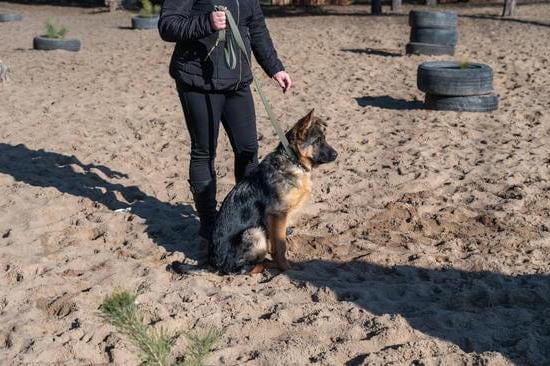Are you considering getting a dog but wondering what’s the best dog to train? Training a dog can be a rewarding experience, but choosing the right breed is crucial to your success.
In this article, we will explore the world of dog training and help you understand different dog breeds and their trainability. Whether you’re a first-time dog owner or an experienced trainer, it’s essential to consider various factors before deciding on the best dog to train for your lifestyle and needs.
When it comes to training a dog, not all breeds are created equal. Some dogs are more trainable than others, making the process easier and more enjoyable. Factors such as intelligence, energy level, and temperament play a significant role in determining a breed’s trainability. Understanding these characteristics can help you make an informed decision when choosing the best dog to train.
In the following sections, we will delve into the top 5 dog breeds that are easy to train, providing insights into their unique qualities and how they respond to training. Additionally, we will share valuable training tips and techniques for different dog breeds, along with personal experiences and success stories of training various breeds.
Whether you’re interested in obedience training, agility training, or behavior modification, this article aims to provide practical guidance for finding the perfect dog to train for your specific goals.
Understanding Different Dog Breeds and Their Trainability
When it comes to training a dog, it’s important to understand that different breeds have different levels of trainability. It’s not just about the intelligence of the dog, but also about their personality, energy levels, and instincts. Understanding these factors can help you choose the best dog to train for your lifestyle and needs.
Personality and Temperament
One of the key factors in determining a dog’s trainability is their personality and temperament. For example, some breeds are known for being eager to please their owners, making them more receptive to training. On the other hand, some breeds are more independent and may require a different approach to training. Understanding the general temperament of different breeds can help you select a dog that will be easier to train based on your preferences.
Energy Levels
Another important consideration when choosing a dog to train is their energy levels. High-energy breeds may require more mental and physical stimulation, which can make training easier as they are more motivated to work. On the other hand, low-energy breeds may require a more creative approach to keep them engaged during training sessions. Considering your own activity level and lifestyle can help you select a breed that matches your energy levels for successful training.
Instincts and Breed Purpose
It’s also essential to consider a breed’s instincts and original purpose when choosing a dog to train. For example, herding dogs have strong instincts to control movement which can translate into good obedience skills with proper training. Understanding a breed’s historical purpose can give insight into what type of training they may excel in based on their natural abilities and inclinations.
By understanding these factors, you can make an informed decision when choosing the best dog breed for your specific needs and goals in training. Each breed has its unique qualities that should be considered before embarking on the journey of training a new furry companion.
Factors to Consider When Choosing the Best Dog to Train
When choosing a dog to train, it is important to consider certain factors that can affect your training experience and the dog’s ability to learn. One key factor to consider is the breed of the dog. Different dog breeds have different temperaments, energy levels, and intelligence, all of which can impact their trainability. It’s important to research the breed characteristics and consider how they align with your lifestyle and training goals.
Another factor to consider is the age of the dog. Puppies are often easier to train as they are more adaptable and impressionable, while older dogs may have already developed certain behaviors making them more challenging to train.
Additionally, considering your own experience level with dogs is crucial. Some breeds may be better suited for first-time dog owners due to their easy-going nature and willingness to please, while others may require more experienced handlers due to their strong-willed or independent nature.
It’s also important to take into account the purpose of your training. Are you looking for a family pet, a service dog, a working dog, or a show dog? The purpose of your training will inform the type of breed that would be best suited for you.
Finally, think about your lifestyle and living situation when choosing a dog to train. Some breeds require more exercise and mental stimulation than others, so it’s essential to choose a breed that fits well with your daily routine and living space.
| Factors | Considerations |
|---|---|
| Breed | Temperament, energy levels, intelligence |
| Age | Puppies vs older dogs |
| Experience Level | First-time owners vs experienced handlers |
Top 5 Dog Breeds That Are Easy to Train
When considering training a dog, it is important to understand that different breeds have different levels of trainability. Some breeds are known for their intelligence and eagerness to please, making them easier to train compared to others. Here are the top 5 dog breeds that are generally considered to be easy to train:
- Labrador Retriever: Known for their friendly and outgoing nature, Labrador Retrievers are highly trainable and eager to learn. They excel in obedience training and are quick to pick up new commands.
- Border Collie: Considered one of the most intelligent dog breeds, Border Collies are quick learners and thrive on mental stimulation. They excel in agility training, obedience training, and even sports such as flyball and herding trials.
- Golden Retriever: With their gentle and friendly demeanor, Golden Retrievers are not only great family pets but also excellent candidates for training. They respond well to positive reinforcement and enjoy being taught new tricks.
- German Shepherd: Renowned for their loyalty, courage, and intelligence, German Shepherds are highly trainable dogs. They excel in various types of training including obedience training, protection work, search and rescue, and more.
- Poodle: Poodles are not only known for their hypoallergenic coat but also for their high level of intelligence. They are eager to please and quick learners, making them easy to train in obedience and agility activities.
These top 5 dog breeds that are easy to train make excellent companions for individuals or families looking for trainable pets that can quickly adapt to various learning opportunities.
Training Tips and Techniques for Different Dog Breeds
Understanding Breed Characteristics
When it comes to training different dog breeds, it’s important to understand their unique characteristics. For example, some breeds are known for their high energy levels, while others are more independent. Understanding these traits can help you tailor your training approach to suit your dog’s specific needs.
Positive Reinforcement
Regardless of the breed, positive reinforcement is a key training technique that can be effective for all dogs. This involves rewarding good behavior with treats, praise, or playtime. Dogs respond well to positive reinforcement, and it helps to build a strong bond between you and your pet.
Consistency
Consistency is another important factor when training different dog breeds. Establishing consistent rules and routines can help your dog understand what is expected of them. This includes using the same commands and cues, as well as consistently enforcing boundaries.
Whether you’re working with a highly intelligent Border Collie or a more independent Shiba Inu, understanding breed characteristics and using positive reinforcement and consistency can help you effectively train different dog breeds. By tailoring your approach to suit your dog’s specific needs, you can set them up for success in their training journey.
Challenges and Limitations of Training Certain Dog Breeds
Training a dog can be a rewarding experience, but it also comes with its challenges. Different dog breeds have different temperaments, energy levels, and instincts that can impact their trainability. It’s important to consider these factors when choosing the best dog to train for your lifestyle and needs.
Some of the challenges and limitations of training certain dog breeds include:
- Strong prey drive: Breeds such as hounds, terriers, and herding dogs have a strong prey drive, which can make it challenging to train them to ignore small animals or pets.
- Independent nature: Some breeds, like Siberian Huskies and Shiba Inus, are known for their independent nature, which can make them less responsive to training commands.
- High energy levels: Dogs with high energy levels, such as Border Collies and Australian Shepherds, require a lot of physical and mental stimulation, making it essential to provide adequate exercise and training opportunities.
It’s important to understand that while these challenges can make training certain dog breeds more difficult, it is not impossible. With patience, consistency, and the right training techniques, even the most challenging breeds can be successfully trained. It’s important to do thorough research on the specific breed you are interested in and seek guidance from experienced trainers if needed. Remember that every dog is an individual with its own personality and learning style.
Ultimately, finding the right approach and understanding the specific needs of each breed will be key in successfully training your furry companion.
Personal Experiences and Success Stories of Training Different Dog Breeds
As any dog owner knows, each breed has its own unique personality and characteristics that can impact their trainability. Personal experiences and success stories of training different dog breeds can provide valuable insights for those looking to embark on the journey of dog training.
One popular breed known for its intelligence and trainability is the Border Collie. Border Collies are often used in agility and obedience competitions due to their high level of intelligence and willingness to learn. Many owners have shared success stories of training their Border Collies to perform complex tricks and tasks with ease.
Another breed that has garnered praise for its trainability is the Labrador Retriever. Labradors are known for their friendly and obedient nature, making them relatively easy to train compared to other breeds. Countless owners have shared their experiences of successfully training their Labradors as service dogs, therapy dogs, as well as in various dog sports such as retrieving and obedience trials.
The German Shepherd is another breed that consistently ranks high in terms of trainability. Their intelligence, loyalty, and strong work ethic make them excellent candidates for various types of training, including search and rescue, police work, protection, obedience, and agility competitions. Many owners have shared personal anecdotes about the remarkable achievements they’ve had while training their German Shepherds in different fields.
These personal experiences serve as a testament to the fact that certain breeds are more predisposed to being trainable than others. However it’s important to remember that individual variation within each breed also plays a significant role in a dog’s trainability.
Conclusion
In conclusion, when it comes to finding the perfect dog to train for your lifestyle and needs, it’s important to consider a variety of factors. Understanding the different trainability of various dog breeds is essential, as well as taking into account your own experience level and the amount of time and effort you are able to dedicate to training.
It’s also crucial to consider the energy level, temperament, and size of the dog in relation to your living situation and daily routine.
While some dog breeds may be easier to train than others, with the right approach and dedication, any dog can be successfully trained. It’s important to remember that training is an ongoing process that requires patience, consistency, and positive reinforcement. Additionally, seeking out professional guidance or training classes can be beneficial for both you and your furry companion.
Ultimately, whether you’re looking for a highly trainable dog for advanced obedience or a more laid-back companion for basic manners, taking the time to research and understand different dog breeds will lead you to find the perfect match for your individual lifestyle and training goals. With love, patience and dedication, any dog has the potential to become a well-behaved and obedient member of your family.
Frequently Asked Questions
Which Is the Easiest Dog to Train?
The easiest dog to train is often considered to be the Border Collie. Known for their intelligence and eagerness to learn, Border Collies are quick learners and excel in obedience training as well as agility and other dog sports.
What Dog Breed Is Best for Training?
When it comes to the best dog breed for training, it really depends on what type of training you are looking to do. For general obedience and ease of training, Labrador Retrievers are a popular choice due to their friendly nature and intelligence.
German Shepherds are also highly regarded for their trainability, making them excellent choices for police and military work as well as service dog roles.
What Is the Hardest Dog to Train?
The hardest dog to train is often said to be the Afghan Hound. Known for their independent nature, Afghan Hounds can be more aloof when it comes to training and may require more patience and consistency compared to other breeds.
Additionally, breeds such as Basenjis and Chow Chows are also known for being more challenging when it comes to training due to their independent streaks.

Welcome to the blog! I am a professional dog trainer and have been working with dogs for many years. In this blog, I will be discussing various topics related to dog training, including tips, tricks, and advice. I hope you find this information helpful and informative. Thanks for reading!





